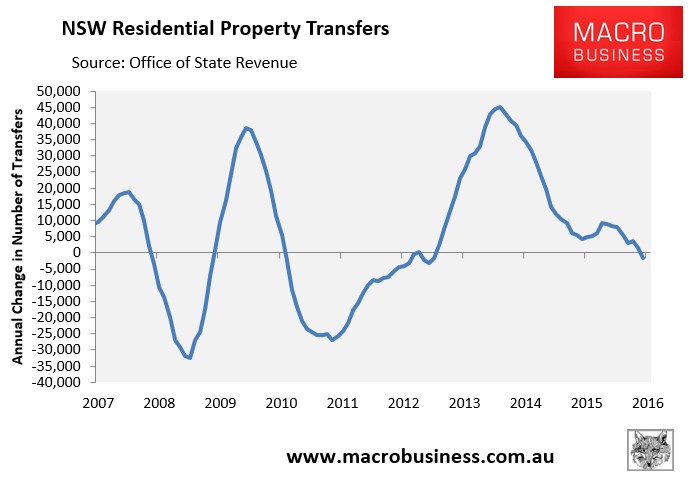…”Yes, [the price] is ridiculously high. It is inflated but I don’t think inflation is going to the burst in the eastern suburbs, it’s going to be a strength.”
Domainfax’s frenzied attempt to fluff some timber into the flaccid Sydney bubble continues today with Su-Lin Tan:
Spring has given the Sydney housing market a boost as buyers scoop up homes even before they hit the auction rooms.
At Sydney’s first Spring mid-week auction at the Cooley Auction Centre in Double Bay on Monday night, packed with 150 people, two thirds of the eastern suburbs properties lined up for auction sold prior – at higher than expected prices.
Setting the pace for the auctions was the nearly $1 million sale of a two-bedroom unit at 215 Birrell Street, Bronte which its agent Krulis Residential’s Mark Simon described as “very old and lacking lustre”.
A resident who already lived in the building, and who had earlier bought the unit’s garage space for $100,000, paid another $875,000 for the 1960 unrenovated apartment, not sold since 1992.
And Sally Patten just hours later:
Smart investors may be well-advised to look at the Brisbane and Adelaide property markets this spring as the supply of houses in Melbourne and Sydney dries up.
Three- and four-bedroom houses within 20 kilometres of the city centre – just the types of properties that investors should be aiming for – are in extremely short supply in the two biggest cities, says Ben Kingsley, chief executive of boutique property adviser Empower Wealth.
…The omens have been there all winter. In Melbourne between 400 and 500 houses were being auctioned each week over the cooler months, down from between 700 and 800 last year. It was a similar story in Sydney.
Kingsley blames the shortage largely on low interest rates, which have made owner-occupiers nervous of upgrading for fear of being forced to overpay for a bigger home in the same area.
“Vendors know they have got to try and get back in, so often they are doing improvements to their homes instead,” says Kingsley.
Winter 2015 was the peak of the investor bubble. That transaction volumes are so far down is Winter 2016 is evidence of a deflating boom not shortage of stock:

I’ve never seen Domainfax in such a frenzied fluffing. I guess as real journalists depart the degree of fluffing rises commensurately. Pretty soon it’ll just be Greg Hywood and his property fluffers sharing the Pyrmont hot desks.
Still, when I applied a microscope, I did manage to find the following little Louis Christopher quote buried at the AFR:
“What’s happening in Sydney is two contrasting markets,” Mr Christopher said. “In the inner ring areas, where you have record year-on-year declines in listings, it fits the story you’ve heard.
“When it comes to the outer ring, the opposite is true. It’s still relatively weak on our numbers. Clearances are certainly lower in Sydney’s west. Listings are still somewhat elevated. There’s not a lot of pressure in Sydney’s outer ring.”
Precisely what MB has been expecting in a rerun of the 2003 bust as weakness in the outer ring mortgage belt stalls the move-up ladder to the centre. What follows is flat-lined prices for a very long time. Although this time I expect external conditions to intervene with a bust before too long.
Domainfax is fluffing the unfluffable.

